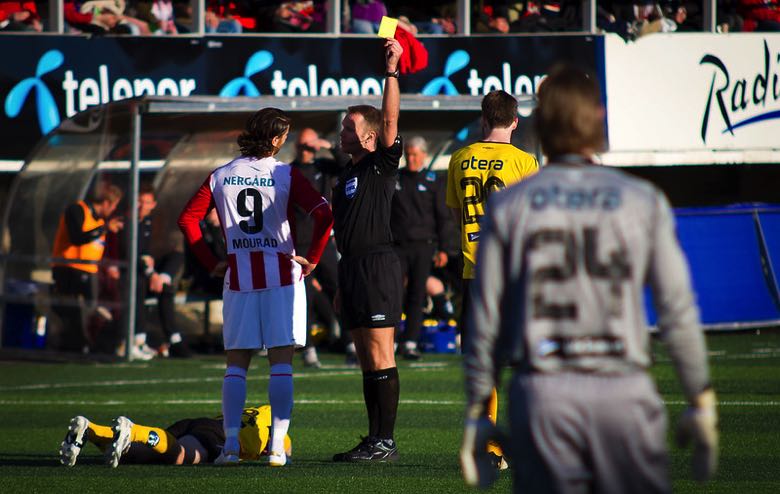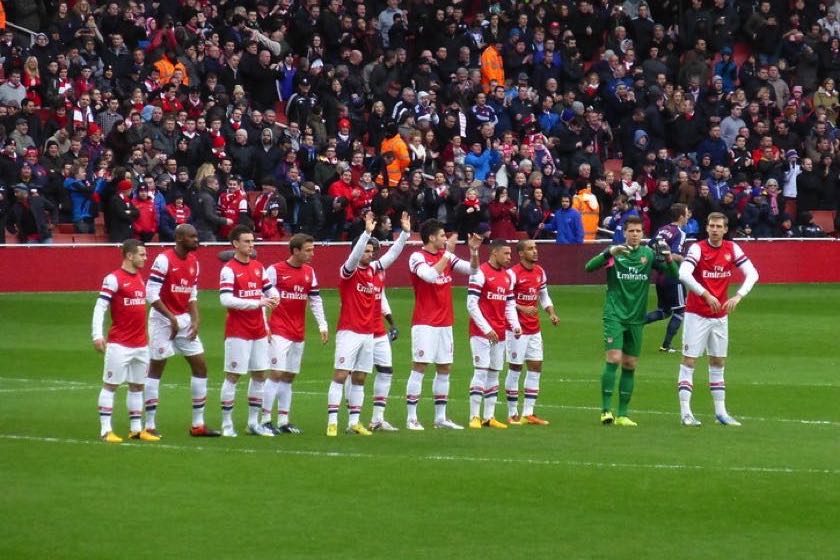Even the most casual of fans know that eleven players make up a football team these days, but it hasn’t always been this way. The rules on squad sizes are changing all the time, as are the number of substitutions that can be made per game. So, it’s always worth having a refresher on the most basic set of rules in football, but also some of the most important too.

bet365 6 SCORES CHALLENGE
Predict scores to win cash prizes!
Win cash prizes by predicting the scores of just six Soccer matches, with 6 Scores Challenge at bet365! All is not lost if you fall short on one or two results, prizes are on offer for three, four and five correct results.
The prize value displayed for six correct predictions is the maximum available based on a single winner in that round and will be reduced in the event of a shared prize-pool.
Eleven vs Eleven
It’s amazing to think that it wasn’t until 1870 that two football rules that are used to this day were introduced. The first was that goalkeepers became the only players on the pitch allowed to handle the ball – before that, anyone could pick it up and run with it in hand or throw it to a teammate. The first 30 years of the sport, known as ‘association football’, must have been absolute pandemonium, with players charging around the pitch with little to no structure to their game.
It was also decreed that each team could only field eleven players at any one time. In the early years of football, the captains of the two teams agreed that they would field between 15 and 21 players – a very informal ‘rule’ that led to chaotic and unbalanced games.
The official Laws of Football were ratified in 1870 in a bid to make football more ‘uniform’, which would encourage professionalism and higher standards. Other archaic rules, including ‘carrying’ (running with the ball in hand) and ‘hacking’ (punting opposition players in the shins, lawfully), were prohibited as well to make football less violent and more competitive.
Soon after, the first international game between England and Scotland took place in the new eleven vs eleven guise, and in 1872 the first-ever edition of the FA Cup was held. The International Football Association Board (IFAB) still decides upon the rules of football even now, and their Law 3 decrees: ‘A match is played by two teams, each with a maximum of eleven players; one must be the goalkeeper.’
What Is the Minimum Number of Players in a Football Team?

We know that the maximum number of players on a football is eleven, but what is the minimum that can be played? In all football rulebooks around the world, a game will be abandoned where one or both teams have fewer than seven players on the pitch.
This could happen for a number of reasons. A game of hard tackles and naughtiness can see a raft of red cards handed out, and so it’s not impossible that a team might be subject to five or more dismissals – in this scenario, the opposition are typically handed an automatic victory.
Each team has a maximum number of substitutions they can make in a game, and sometimes they will use up this allotment only for their player(s) to be forced from the field through injury, with no more replacements allowed. That, allied to red cards, can see a side drop below the necessary seven players.
Clubs can also be hit by illness and sickness bugs, which can decimate their squad. You can start a game with as few as seven players, but any less and the fixture is abandoned and forfeited. These might all sound unlikely scenarios, but the above actually unfolded as recently as 2021, and in a top-tier game in Portugal no less.
How Many Players Are in a Football Squad?
Each football tournament has its own rules on how many players can be named in a squad. At the 2022 World Cup, each nation could name a squad of 26 players, and this had to include three goalkeepers. This was an increase in the traditional 23-player squad, to reflect the disruptive nature of moving the tournament to the winter, which is in the heart of many club seasons around the globe.
A starting eleven would be named around an hour before the match on the official teamsheet, with the other 15 players all named as substitutes (assuming they’re not unavailable due to injury or suspension).
In the English Premier League, clubs are required to name a 25-man squad, with eight of those falling under the category of ‘homegrown’. The squads must be confirmed by 5pm on the day after the transfer windows in August and January each season. An unlimited number of under-21 players can be used, which helps to cover against squad depletions caused by illness, injury and unavailability. On matchday, a starting eleven will be named alongside nine substitutes, which was increased from the 18-man squads prior to 2020.
How Many Substitutions Can Be Made in a Football Game?

In the days before the pandemic, it was typical across the globe that three substitutions could be made per game. But new rules thereafter, including those outlined in the Premier League’s Project Restart, saw the number of subs allowed per fixture increased to five.
In the Premier League, substitutions can be made in three lots only, or at half-time. Five players can’t be brought on individually in a move designed to combat time wasting. The 2022 World Cup in the Qatar was the first in the history of the competition to allow five substitutions per game, rather than the traditional three.
How Many Goalkeepers Are in a Football Team?
It’s actually a pretty interesting question: could a football team actually field more than one goalkeeper in their starting eleven? The answer is a resounding no, as the spoilsports at IFAB have decreed that a football team must have a goalkeeper named in their starting eleven – but no more than one.
As far as goalkeepers in a squad are concerned, as we have already learned a World Cup squad must contain three goalkeepers – this is an explicit rule detailed by FIFA. As for the Premier League, there actually isn’t a rule on how many goalkeepers can be named in a squad. Usually, a club will name three – their main keeper (who will start the majority of games when fit), a back-up and then a third choice, as well.
They can call upon a goalkeeper aged under 21 if necessary, and in special circumstances, the Premier League may agree on an emergency loan where a club has a ‘crisis’ in this department.
How Many Players in Each Position Are Used in Football?

Sports like rugby and basketball dictate that specific positions on the pitch/court must be filled. But, in football, a manager has complete freedom to name the team he or she wants – providing one goalkeeper is selected.
Otherwise, they have free reign to come up with their own formation and tactics. In the old days, English football clubs typically lined up in a strange-looking 2-3-5 formation, with two defenders, three midfielders and five attacking players. Unsurprisingly, that led to a lot of high-scoring games.
The offside rule completely changed the face of football, and now more defensive formations were used given that the edge of ‘goal hanging’ was now lost. Football tactics would evolve over the decades that followed, and in the 1950s, three and four-player defensive lines became more commonplace.
These days, there’s an incredible range of mindsets and tactics deployed. Some managers go for tried and tested formations and strategies that are rigid, whereas others – like Pep Guardiola at Manchester City – are so fluid that they name a handful each of defenders, midfielders and attackers but don’t instil any limitations as to there they can roam on the pitch.

